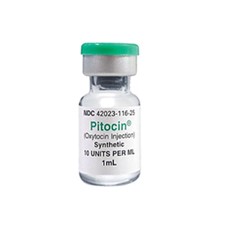Postpartum Hemorrhage > Maternal & Newborn
Exam Review
Risk factors
Total Questions : 4
Showing 4 questions, Sign in for moreA nurse is caring for a client who is 1 day postpartum (PP) and is being monitored carefully after a significant postpartum hemorrhage.
Which of the following should the nurse report to the obstetrician?
Explanation
This is because a normal urine output in the postpartum period ranges from1.03 to 1.40 cc/kg/hror500 to 1000 mLper void.A urine output of 200 mL for the past 8 hours is much lower than the normal range and indicatesoliguria, which can be a sign ofhypovolemia,renal failure, orurinary retentiondue to postpartum hemorrhage.
Choice B is wrong because a weight decrease of 2 pounds since delivery is normal and expected due to the loss of blood, amniotic fluid, and placenta.
Choice C is wrong because a blood pressure of 110/70 mm Hg is within the normal range and does not indicate hypotension or hypertension.
Choice D is wrong because a hemoglobin level of 12 g/dL is also within the normal range and does not indicate anemia or polycythemia.
A nurse is caring for a client who has just delivered a baby and is at risk for postpartum hemorrhage.
Which of the following interventions should the nurse include in the plan of care?
Explanation
Administering oxytocin (Pitocin) after delivery is the most effective intervention to prevent postpartum hemorrhage caused by uterine atony.Oxytocin is a uterotonic agent that stimulates uterine contractions and reduces bleeding.
Choice B is wrong because encouraging the client to ambulate as soon as possible may increase the risk of bleeding and shock if the client has uterine atony or lacerations.
Choice C is wrong because encouraging the client to drink fluids only when thirsty may lead to dehydration and hypovolemia, which can worsen the effects of hemorrhage.
Choice D is wrong because administering magnesium sulfate (MgSO4) during labor is used to prevent seizures in clients with preeclampsia or eclampsia, not to prevent postpartum hemorrhage.Magnesium sulfate may also cause uterine relaxation and increase bleeding.

A client who has just delivered a baby is at risk for postpartum hemorrhage due to uterine atony.
Which of the following interventions should the nurse include in the plan of care?
Explanation
Oxytocin is a hormone that stimulates uterine contractions and helps prevent postpartum hemorrhage due to uterine atony.Uterine atony is the most common cause of postpartum hemorrhage, and it occurs when the uterus does not contract enough to stop the bleeding from the placental site.
Choice A is wrong because encouraging frequent voiding does not directly affect uterine contractions.However, it can help reduce bladder distension, which can interfere with uterine contraction and cause bleeding.
Choice B is wrong because magnesium sulfate (MgSO4) is used to prevent seizures in preeclampsia and eclampsia, not to prevent postpartum hemorrhage.In fact, magnesium sulfate can cause uterine relaxation and increase the risk of bleeding.
Choice C is wrong because encouraging early ambulation does not prevent postpartum hemorrhage due to uterine atony.Early ambulation can help prevent thromboembolic complications, such as deep vein thrombosis and pulmonary embolism, but it does not affect uterine contractions.
A nurse is caring for a client who has just delivered a baby and is at risk for postpartum hemorrhage.
Which of the following findings should alert the nurse to the possibility of hemorrhage?
Explanation
This is a sign of hypovolemia (low blood volume) due to excessive blood loss.A normal urine output is at least 60 mL/hour for an adult.
Choice A is wrong because a blood pressure of 130/80 mm Hg is within the normal range for an adult.
A low blood pressure would indicate postpartum hemorrhage.
Choice C is wrong because a fundus that is firm and midline indicates that the uterus is contracting well and preventing bleeding.A soft or boggy fundus would indicate uterine atony, the most common cause of postpartum hemorrhage.
Choice D is wrong because lochia rubra with small clots is normal for the first few days after delivery.
Large clots or excessive bleeding would indicate postpartum hemorrhage.
Sign Up or Login to view all the 4 Questions on this Exam
Join over 100,000+ nursing students using Nursingprepexams’s science-backend flashcards, practice tests and expert solutions to improve their grades and reach their goals.
Sign Up Now

